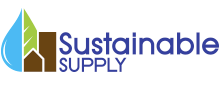How Should I Wash My Hands?
The Centers for Disease Control and Prevention (CDC) state, “Handwashing is like a ‘do it yourself’ vaccine.”
Often labeled as the most important step you can take to prevent sickness in yourself and avoid spreading germs to others, there’s still so much confusion surrounding the process, like what’s the right way to wash your hands? What’s the best product to use? Hot or cold water? When should I wash?
The answers to these questions are important for us all, for different reasons - the right way to wash is important for health, but the right product to use can also impact your facility’s budget in a substantial way. So let’s demystify this process and make handwashing work like the vaccine it’s meant to be.


What’s the right way to wash your hands? The CDC offers this simple process:
- Wet your hands with clean, running water (warm or cold), turn off the tap, and apply soap.
- Lather your hands by rubbing them together with the soap. Be sure to lather the backs of your hands, between your fingers, and under your nails.
- Scrub your hands for at least 20 seconds. Need a timer? Hum the "Happy Birthday" song from beginning to end twice.
- Rinse your hands well under clean, running water.
- Dry your hands using a clean towel or air dry them.
It’s that simple: WET, LATHER, SCRUB, RINSE, DRY. Perhaps the most important info to note from a process standpoint that people tend to take shortcuts on is the lathering of the backs of hands, in between fingers, and under nails.

Take note that cold or warm water can be used. In fact, numerous studies have revealed that hot water temps have no impact on pathogen removal whatsoever. On the contrary, microbiological swabbing of hands revealed an increase in E.coli and Listeria counts on hands that were washed in basins when very hot water was used, when compared to cold water. And then there’s all that water that’s wasted while waiting for it to heat up - money down the drain!




